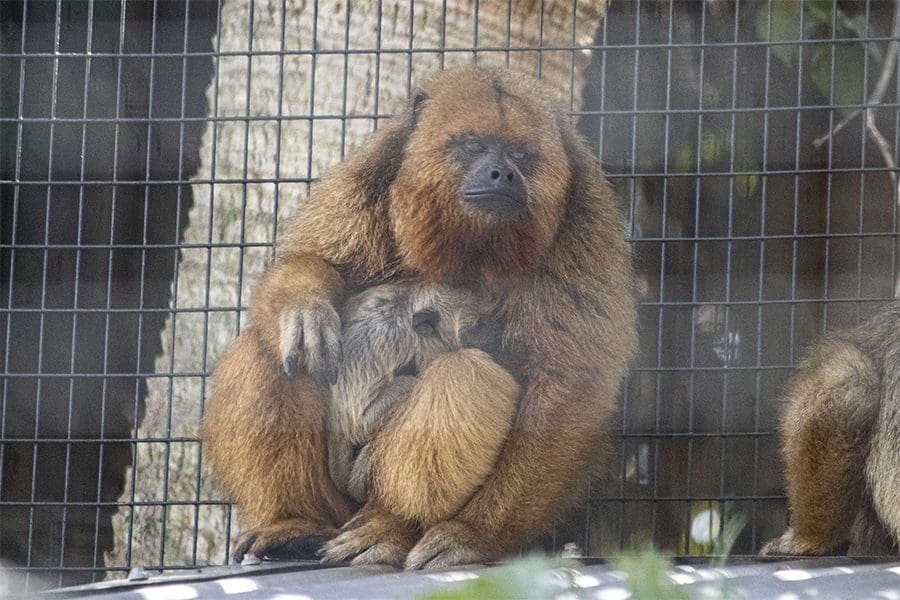

Mini me: Baya’s infant is similar colored, making them hard to spot from far away!
The Zoo’s first black howler monkey baby has arrived! In the early morning of August 2, 13-year-old Baya gave birth to an infant. According to animal care staff, both mom and baby are doing well.
Every Zoo birth is celebrated, but this one is extra special as it came as a surprise! “We knew that it was a possibility as Stormy bred Baya right away when she arrived last fall,” said Michelle Ferguson, Rainforest Revealed Area Supervisor. It can be difficult to confirm whether howler monkeys are pregnant. Animal care staff use weight and body changes to determine the likelihood.
The infant’s sire, 18-year-old Stormy, and 22-year-old female Maddie have been Zoo residents since 2017. In late 2021, we welcomed four female howler monkeys, Baya and her three daughters: Bennie (7 years old), Batata (6 years old) and Beatle (5 years old).
The four females’ arrival was a part of the Association of Zoos and Aquariums’ Species Survival Plan (SSP) for their species. Three of the four (all except Batata) were recommended through the SSP to breed with Stormy. SSP’s are designed to manage the populations of animals within AZA-accredited zoos to ensure healthy, genetically diverse populations.
All infant howler monkeys are born with blonde hair! Because we prefer to be as hands-off as possible with our new additions, we do not know the sex of the baby at this time. If the newborn is a male, their hair will turn black when they are around two-and-a-half years old!
Animal care staff note that Baya and her baby appear healthy. “We have observed the baby nursing,” said Michelle. “The infant looks to be strong as they grip onto their mom. Baya has been taking extra food from her keepers like normal.”
The youngling is Baya’s sixth offspring, including her three daughters that reside with us. Animal care staff is continuing to monitor female Beatle to check for weight and body changes as she was also observed breeding with Stormy.
Female howler monkeys care for their young for around 12 months. After that, the young stay with their natal group and will continue to be around mom and other family members. This species has been known to have other females in the group help care for the young and even carry, groom and protect them!
Although black howler monkeys are not considered endangered, they are threatened in their natural range due to habitat loss, agricultural development and human hunting.
Baya and the newborn are currently on habitat in Rainforest Revealed, where they share a large space with most of their troop as well as capybara, macaws, scarlet ibises, river turtles, red-legged seriema and roseate spoonbills. See if you can spot our newest baby on your next visit!
Brevard Zoo is an independent, not-for-profit organization that receives no recurring government funding for our operating costs. Your generous support enables us to continue to serve our community and continue our vital animal wellness, education and conservation programs.
